Researchers are calling for global action to address the complex mix of chemicals that go into plastics and for greater transparency on what they are. Identifying and managing chemicals in plastics is going to be key to tackling waste, they argue.
Discussions got underway in December on a global plastics treaty to address the full life cycle of plastics. Negotiators are also currently meeting to work out how to create a science policy panel to advise governments on chemical pollution and waste.
The challenge is the complexity and diversity of plastics, says Zhanyun Wang, whose previous research has helped identify more than 10,000 chemicals that may have been used in polymer production. ‘Maybe we should try to rethink why we are using different kinds of formulations for basically very similar applications – is there a need for the diversity?’ asks his co-author Antonia Praetorius, an environmental chemist at the University of Amsterdam.
Around 40% of the plastics produced globally are used in packaging, and just 14% of them are collected for recycling. Legislation to make producers responsible for the packaging they put on the market – already common in the EU – is coming into force in the UK this year. Eventually fees will be adjusted according to packaging recyclability. Additives such as inks, pigments and adhesives all affect recycling but, apart from food grade plastics, there are currently no regulations on what materials should be used.
There is a need for ‘compatible chemistry’, says Lynsey Maddison, who works on product development at flexible packaging manufacturer, ProAmpac. ‘Part of the push of a lot of the legislation recently is to minimise the contamination. It’s very much designing of products to give you the best quality recyclate rather than necessarily designing for impact.’
Greener by design
The Organisation for Economic Co-operation and Development (OECD) has developed pointers for integrating sustainable chemistry into the plastics design process. For example, when designing a detergent bottle manufacturers should consider polymer recyclability and whether barrier properties could avoid unnecessary use of additives. It’s now turning its attention to the chemical content of recycled plastics, to address what happens when different materials are mixed and whether additional chemicals are introduced during use. ‘In an ideal world we’d have a very clear idea of the inputs. And then you’d have some techniques and ways to check the outputs of the recyclate,’ suggests Eeva Leinala, an environmental chemist in the OECD’s environment directorate.
‘We classify [plastics] as just a base polymer and in fact they’re complicated mixtures of things and the additives are diverse and serve different roles and functions,’ says Michael Shaver, a polymer chemist at the University of Manchester. ‘When we think about recycling, if we don’t know enough about composition to sort, then we start mixing those feedstocks together [and] you now have a whole next level of different additives. Some of those are not going to be relevant to your new end application. Some might compete with each other, some might react with each other and create new risks.’
Simplifying those mixtures is a key challenge to maximise the number of times a polymer can go through a mechanical recycling process before it has to be put through a more energy intensive chemical process, such as depolymerisation or pyrolysis.
‘It’s all stemming from the end-of-life point, and going back up the chain, because we have to design for what [recyclers] can handle currently,’ says Maddison. ProAmpac is replacing mixed material laminates with polyethylene-based materials that are laminated with an adhesive designed to be compatible with the polymer layers and recycling technology. This means the adhesive doesn’t have to be separated so the packaging can be recycled as a single unit. But changing the material causes other conflicts for designers. ‘Problems come in trying to match the heat resistance that you get from a polyester with the heat resistance you can get from a polyethylene,’ explains Maddison. The melting point of a polyethylene (70–80°C) is far below that of a polyester (about 220°C). ‘When that material gets on customers’ packing lines, especially when they’re packing at high speed – you tend to pack at high temperatures – which is why the polyesters were used in the first place. So we’ve had to look very carefully at the whole aspect of that chain.’
Banking on better recycling
Coordination and transparency along supply chains is needed to achieve circularity. This has happened to some extent with bottles made from polyethylene terephthalate (PET), where industry players and recyclers agreed a set of design principles, so that bottles from different manufacturers could be recycled. Any new innovations are tested to assess whether they interfere with recycling.
Mastercard is taking a similar approach to bank cards. ‘As a non-chemist, [this] is the most fundamental piece – design the products better in the first place. Look at the materials and think about the end of life,’ says Joe Pitcher, who runs the sustainable cards programme at Mastercard. ‘We’re now thinking about what that card should be made out of, how cards are constructed, from which materials and what happens to them when they expire.’
The bulk of the six billion banking cards manufactured each year are made from several layers of PVC. Their production is responsible for over 100,000 tonnes of greenhouse gas emissions and they contaminate landfill when they’re thrown away. Mastercard is working with financial institutions and card manufacturers to come up with alternatives, such as recycled plastics, and now has a range of more sustainable options. But even those options don’t make for straightforward recycling because of the metals in the chip and antenna that allow wireless transactions.
Now, Shaver and his colleagues at Manchester University have created a chemical recycling process for cards made from glycol-modified PET, that allows recovery of all the valuable embedded metals. The team is now assessing the environmental impacts of the process, but the business model looks promising. ‘Obviously, you’ve got a better card return rate overall. So there’s more value in the plastic. But ultimately, within the chip, you’ve got gold, silver, copper, nickel. And when they can be truly separated off, they can fund the programme pretty much,’ says Pitcher.





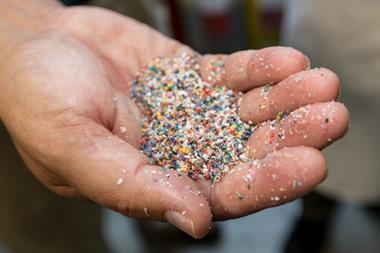
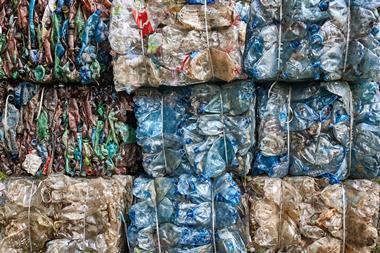
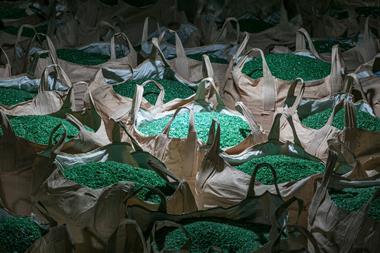
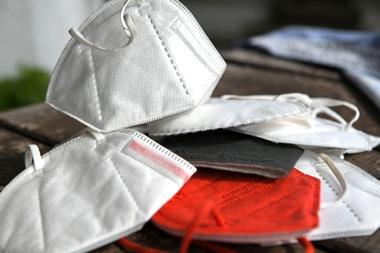

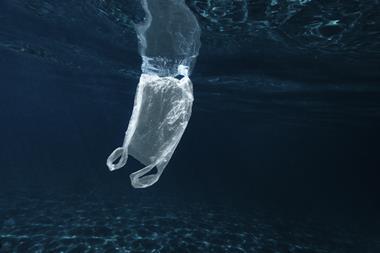






No comments yet